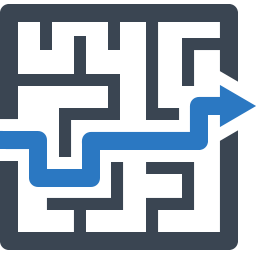Image Source: BoardGameGeek
The reading material for this week concerned the process of documenting of the current-state. As we were advised earlier in the class, the future-state (the destination) should be documented first, and any current-state documentation should be kept to the bare minimum that is necessary (Burke, Papegaaij & Guevara, 2011). So how do we determine how much is necessary?
The key, according to Gartner, is to “identify the gaps between where you are today and where you want to be in the future, and then develop plans to bridge these gaps” (James, G. 2006). Let’s think back to the example I used in week 6 of the exploration that happened during the Age of Discovery. Columbus had a concrete plan for his trip west to find India. He had to make preparations for the long journey into the unknown as best as he could, including supplies, crew and navigation plans. This is all part of implementing a plan to reach his destination (future-state). Once he had the plan in place, though, he had to actually take stock of his existing supplies before he could embark on his journey. Then he would need to purchase the balance of supplies he needed to reach the planned capacity. If you needed, for instance, 20 barrels of fresh water and already had 10, you are only going to purchase 10 more. You first evaluate what you will need, then evaluate what you already have, and then you know how to meet the remaining needs. In the process of determining our needs to achieve our destination (gap analysis), we can ignore aspects of our current-state that have no relevance to the future-state.
The same is true for Enterprise Architecture. Too many times, enterprise architects get caught up in the process of creating complete documentation of the current-state of the architecture. There are many aspects of the current-state that have no real relevance to the desired future-state, and time spent documenting those aspects is time wasted. Instead, enterprise architects must prioritize the current-state documentation on only the aspects that are reflected in the future-state documentation.
Image Source: myCareerCoach
References:
Burke, B., Papegaaij, B. & Guevara, D. (2011) Enterprise Architechture Program Pitfalls: Don’t Start With the Current State (G00210232). Gartner, January
James, G. (2006) Just Enough Current-State Architecture (G00140767). Gartner June

